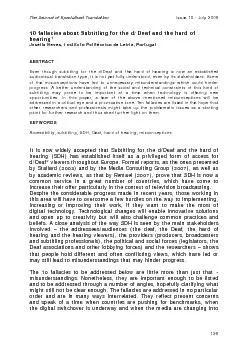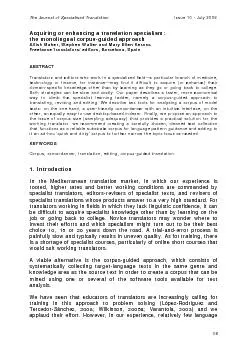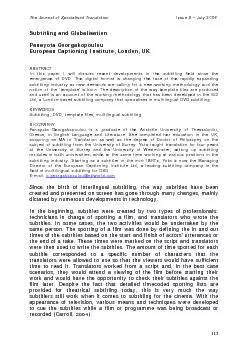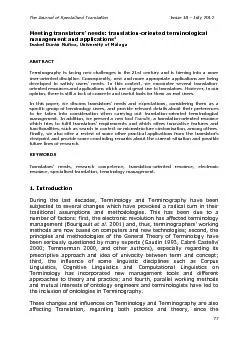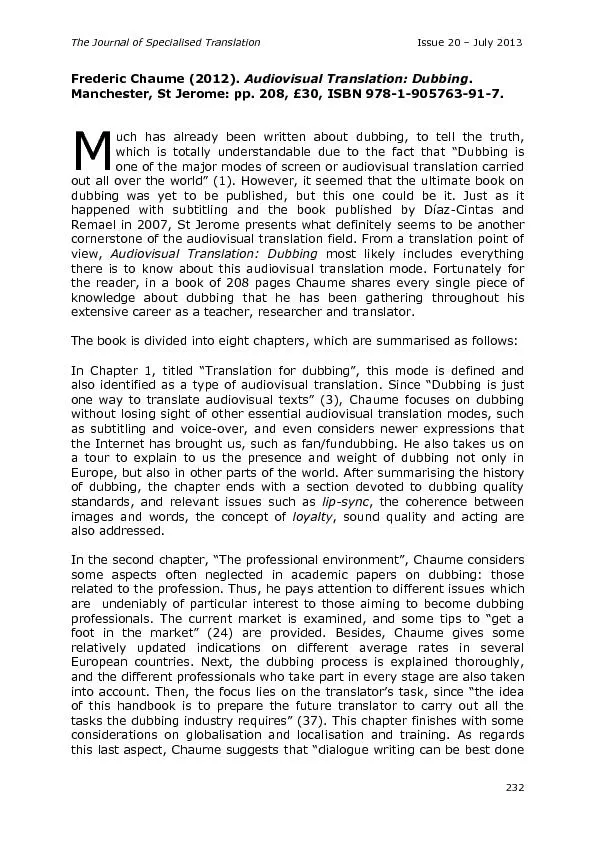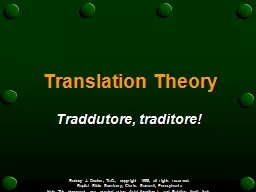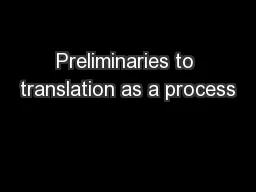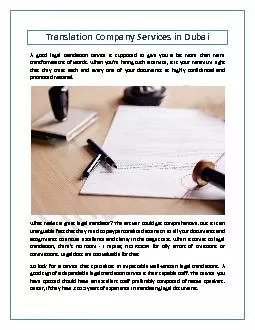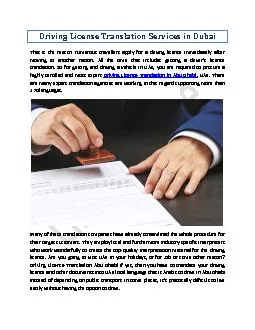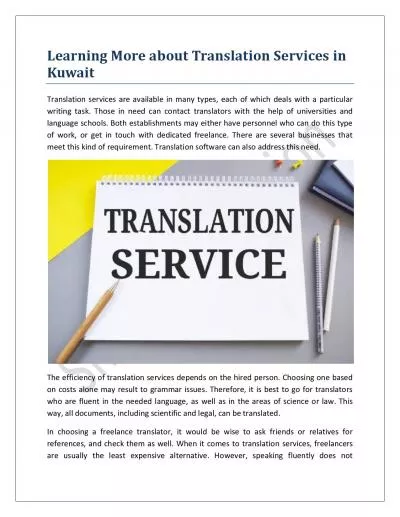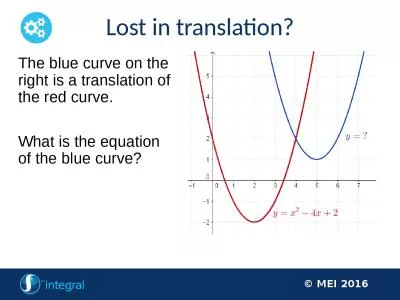PDF-The Journal of Specialised Translation Issue 10 - July 2008n
Author : yoshiko-marsland | Published Date : 2015-11-05
there appears to be very little to keep this fire burning If we were to take the following definition of captioning set forward by the Captioned Media Programme
Presentation Embed Code
Download Presentation
Download Presentation The PPT/PDF document "The Journal of Specialised Translation ..." is the property of its rightful owner. Permission is granted to download and print the materials on this website for personal, non-commercial use only, and to display it on your personal computer provided you do not modify the materials and that you retain all copyright notices contained in the materials. By downloading content from our website, you accept the terms of this agreement.
The Journal of Specialised Translation Issue 10 - July 2008n: Transcript
Download Rules Of Document
"The Journal of Specialised Translation Issue 10 - July 2008n"The content belongs to its owner. You may download and print it for personal use, without modification, and keep all copyright notices. By downloading, you agree to these terms.
Related Documents

